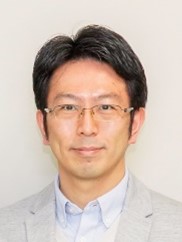
RIES
Research Institute for Electronic Science, Hokkaido University
北海道大学
電子科学研究所

LAST UPDATE 2017/02/25
-
研究者氏名
Researcher Name三友秀之 Hideyuki MITOMO
准教授 Associate Professor -
所属
Affiliation北海道大学 電子科学研究所
生命科学研究部門・生体分子デバイス研究分野
Research Institute for Electronic Science, Hokkaido University
Section of Biology and Life Sciences, Laboratory of Molecular Devices -
研究キーワード
Research Keywordsソフトマテリアル
金属ナノ粒子の自己組織化
光機能・プラズモニクス
Soft materials
Metal nanoparticles assemblies
Photonic functions/Plasmonics
- 研究テーマ
Research Subject -
金属ナノ構造体とソフトマターを利用した高機能性デバイスの開発
Development of functional devices using metal nanoparticles and soft matter
研究の背景 Background of the Research
金属などの材料はナノスケールのサイズになるとバルクとは異なる機能や物性を発揮することが知られています。特に金や銀のナノ粒子は光によって励起され、蛍光やラマン散乱の増強、光触媒活性などを示すため有用な材料として注目されています。形や構造が制御された金属ナノ構造体ではさらなる高次機能の発現が期待できるため、大きさや形状を制御したナノ粒子の作製とそのナノ粒子の集合体形成に関する研究が積極的に進められています。
Novel properties or functions come into existence from the downsizing of the materials in the order of nanometer-scale. In particular, gold or silver nanoparticles attract much attention due to their functions induced by light irradiation, such as enhancement of fluorescence or Raman scattering and photocatalytic activity. It is expected that metal nanostructures which have controlled size and shape will show higher functions. Therefore huge effort has been spent for the fabrication of size and shape controlled nanoparticles andtheir assemblies.
研究の目標 Research Objective
金属のナノ構造体を自己組織化により効率良く作製する手法の開発と得られたナノ構造体を動的に制御することで高機能なプラズモニックデバイスを創製することを目指しています。外部刺激や環境変化に応答して体積変化を示す機能性高分子材料であるハイドロゲルを用いて、金属ナノアレイの間隔を動的に制御する技術を開発し、有用なデバイスへの展開を目指しています。
The main objectives of my research are development of fabrication method for metal nanostructures via self-assembly and creation of highly functional plasmonic devices with dynamically tunable metal nanostructures. To realize dynamic tuning of metal nanostructures I have focused on the use of the hydrogel, which is a 3D polymer network swollen with water and can change its volume by external signal or environmental change. It is already shown that the expansion or shrinkage of the gel changed the distance of the Au pattern on it. This will work for the creation of tunable plasmonic devices.
研究図Figures

論文発表 / Publications
Adv. Opt. Mater., 4, 259–263 (2016), Small, 14, 1704230 (2018), Nanoscale Adv., 1, 1731-1739 (2019), Nanoscale Adv., 2, 3798-3803 (2020), Langmuir, 36, 13, 3590-3599 (2020), Nanoscale Adv., 3, 3762-3769 (2021), Chem. Mater., 34, 4062–4072 (2022)
研究者連絡先 / HP
- mitomo
 es.hokudai.ac.jp
es.hokudai.ac.jp - https://chem.es.hokudai.ac.jp/